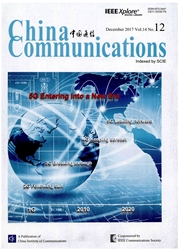

 中文摘要:
中文摘要:
The pursuit of the higher performance mobile communications forces the emergence of the fifth generation mobile communication(5G). 5G network, integrating wireless and wired domain, can be qualified for the complex virtual network work oriented to the cross-domain requirement. In this paper, we focus on the multi-domain virtual network embedding in a heterogeneous 5G network infrastructure, which facilitates the resource sharing for diverse-function demands from fixed/mobile end users. We proposed the mathematical ILP model for this problem.And based on the layered-substrate-resource auxiliary graph and an effective six-quadrant service-type-judgment method, 5G embedding demands can be classified accurately to match different user access densities. A collection of novel heuristic algorithms of virtual 5G network embedding are proposed. A great deal of numerical simulation results testified that our algorithm performed better in terms of average blocking rate, routing latency and wireless/wired resource utilization, compared with the benchmark.
 英文摘要:
英文摘要:
The pursuit of the higher perfor- mance mobile communications forces the emergence of the fifth generation mobile communication (5G). 5G network, integrating wireless and wired domain, can be qualified for the complex virtual network work orient- ed to the cross-domain requirement. In this paper, we focus on the multi-domain virtual network embedding in a heterogeneous 5G network infrastructure, which facilitates the resource sharing for diverse-function demands from fixed/mobile end users. We proposed the mathematical ILP model for this problem. And based on the layered-substrate-resource auxiliary graph and an effective six-quadrant service-type-judgment method, 5G embedding demands can be classified accurately to match different user access densities. A collection of novel heuristic algorithms of virtual 5G net- work embedding are proposed. A great deal of numerical simulation results testified that our algorithm performed better in terms of average blocking rate, routing latency and wireless/ wired resource utilization, compared with the benchmark.
 同期刊论文项目
同期刊论文项目
 同项目期刊论文
同项目期刊论文
 期刊信息
期刊信息
